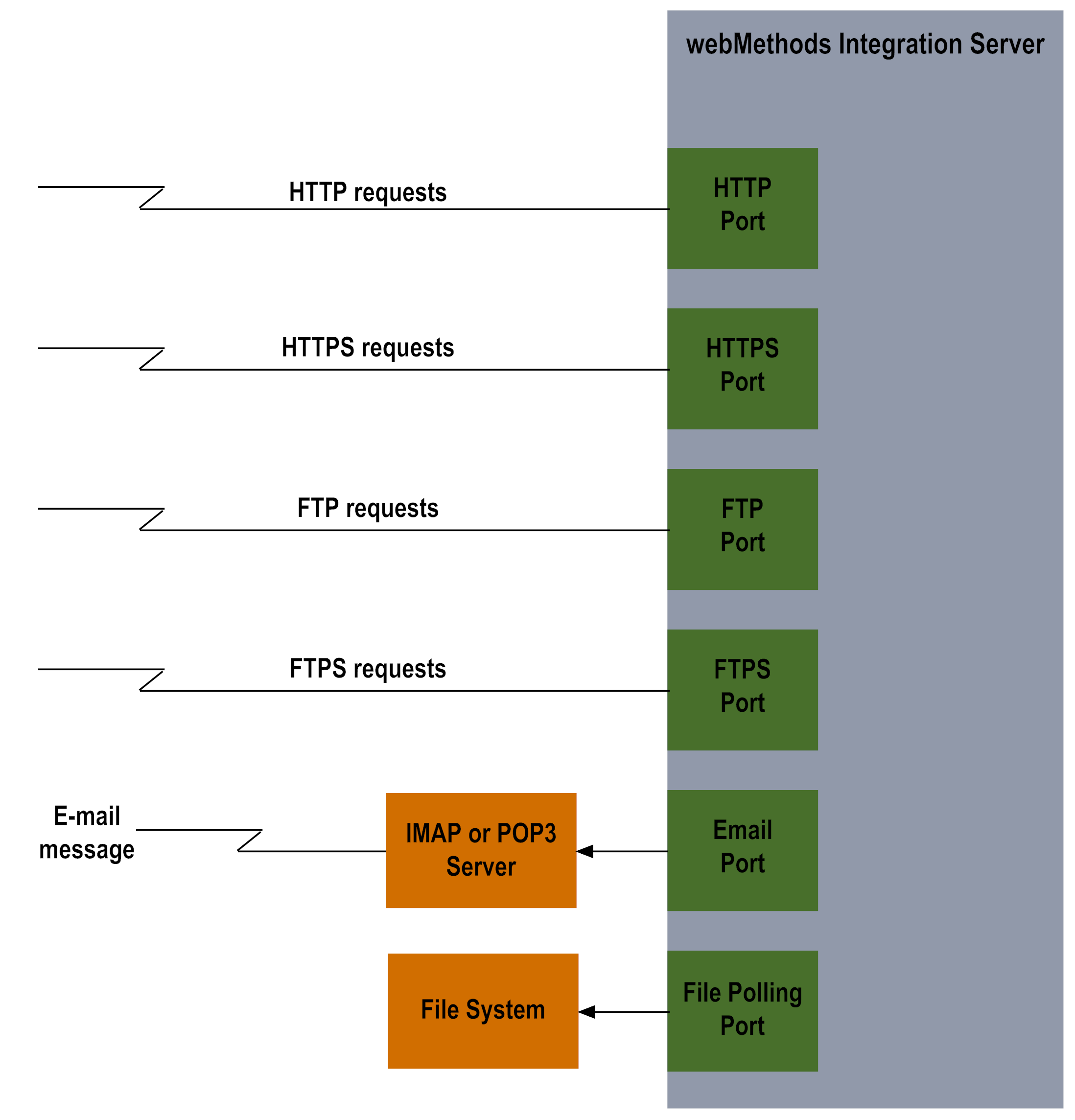Architecture
The Integration Server listens for client requests on one or more ports. You can associate the type of protocol that the server uses for each port. The server supports HTTP, HTTPS, FTP, FTPS, and e-mail ports.
Most clients use an HTTP or HTTPS port for communication with the server. Because the server supports both HTTP and HTTPS, it can listen on an HTTP port for non-secure client requests and an HTTPS port for secure requests.
Note:
Unlike HTTP, FTP, and e-mail, HTTPS and FTPS provide for secure data transmission. They do this through encryption and certificates. Without HTTPS or FTPS, unauthorized users might be able to capture or modify data, use IP spoofing to attack servers, access unauthorized services, or capture passwords. If you must pass passwords, make sure the back-end application has minimal privileges.
A typical use for an FTP or FTPS port is to get a directory listing, change to the directory that contains the service you want to invoke, put a file that contains input to the service, and run the service. The server returns the output from the service to the directory in which the service resides. Use an e-mail port to receive requests through an e-mail server, such as POP3 or IMAP.
You can define as many ports as you want on each Integration Server instance. The default server instance has an HTTP port at 5555.
Note:
The default server instance also defines a diagnostic port at 9999. The diagnostic port uses the HTTP protocol and provides you access to the
Integration Server when it is unresponsive. For more information about the diagnostic port, see
Diagnosing the
Integration Server .
The Server Listens for Requests on Ports that You Specify
There may be times when you want to use the standard port numbers used by web servers: port 80 for HTTP requests and port 443 for HTTPS requests. If your Integration Server runs on a Windows system, this is not a problem. However, if your Integration Server runs on a UNIX system, using a port number below 1024 requires that the server run as "root." For security reasons, Software AG discourages this practice. Instead, run your Integration Server using an unprivileged user ID on a high number port (for example 1024 or above) and use the port remapping capabilities present in most firewalls to move requests to the higher numbered ports.

